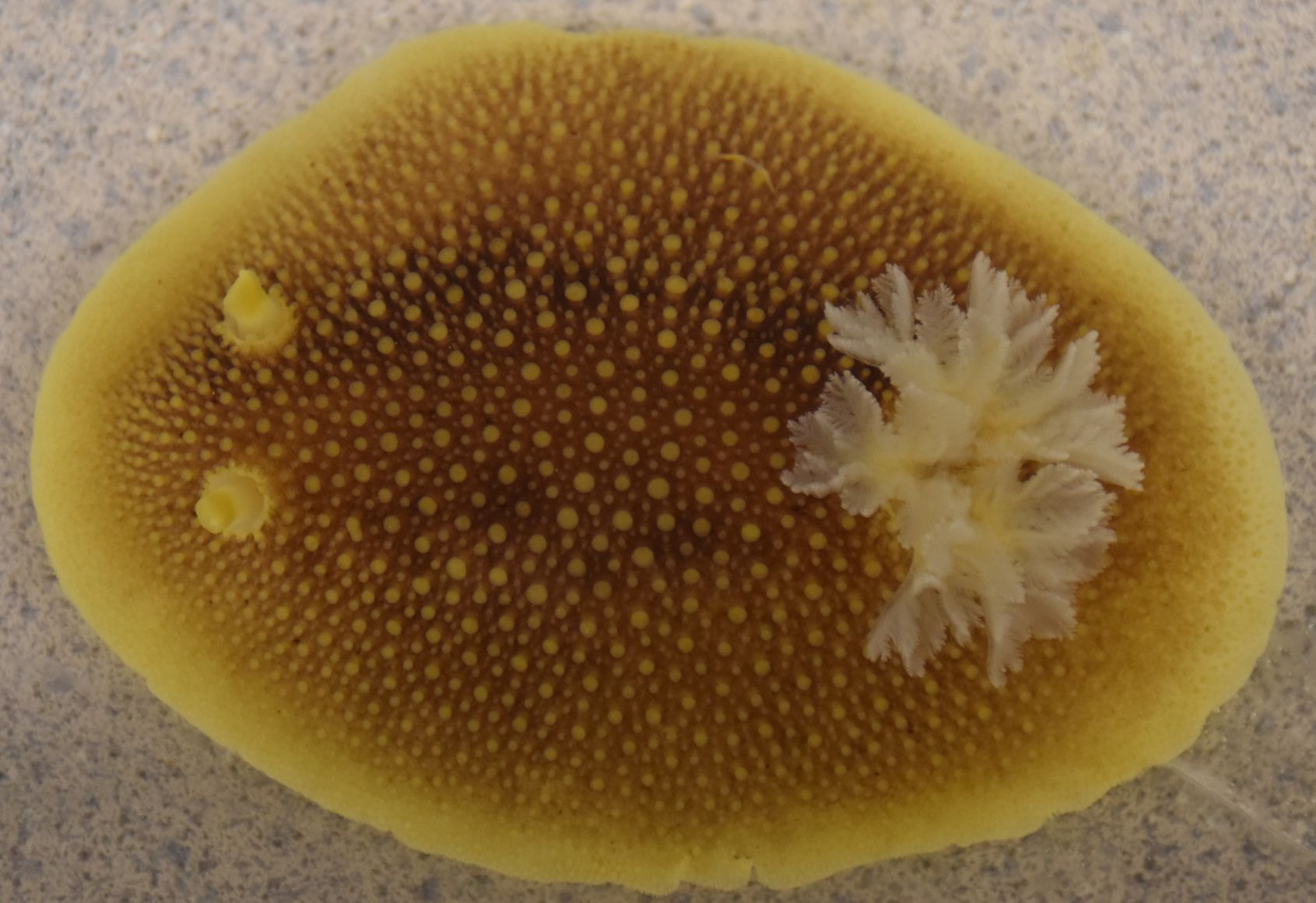Peltodoris nobilis (MacFarland, 1905)Common name: Sea Lemon, Pacific sea lemon, Noble Pacific doris |
|
|
Synonyms: Anisodoris nobilis
|
|
|
Class Gastropoda
Superfamily Eudoridoidea
Family Discodorididae
|
|
|
Peltodoris
nobilis:
collected around 20 m depth at Sares Head near Rosario Beach Marine Lab
in June, 2020
|
|
|
Total length 10.5 cm.
Photo by Dave Cowles
|
|
Geographical Range: Kodiak Island, Alaska to Isla Coronados (Baja California). Rare in intertidal in southern part of range
Depth Range: Low intertidal zone and subtidal to 35m
Habitat: Common in low intertidal, on rocky shores, harbor pilings
Biology/Natural History: This is the largest of California nudibranchs. It has a penetrating, fruity odor, which may be used to fend off predators. It feeds on a variety of sponges, including Axocielita originalis, Astylinifer arndti, Hymenamphiastra cyanocrypta, Lissodendoryx firma, Halichondria panicea, Haliclona permollis, and species in the genera Mycale, Zygherpa, Parasperella, and Prianos. It may also ingest quantities of organic detritus. Studies show that individual nudibranchs are conservative in their food habits; they tend to keep eating the same food species, even if they are transferred to other sites. Spawning period varies with location, but extend for several months. The mating is reciprocal; partners may be of vastly different size. This species is a simple organism to study the nervous system and thus has been used for much neurophysiological research.
Sponges which live on the motile scallop Chlamys hastata are less vulnerable to predation by this nudibranch.
| Return to: | |||
| Main Page | Alphabetic Index | Systematic Index | Glossary |
References:
Dichotomous Keys:
General References:
O'Clair and O'Clair, 1998
Morris et al., (1980)
Scientific Papers:
Bloom, S., 1975. The motile escape response of a sessile
prey:
a sponge-scallop mutualism. J. Exp. Mar. Biol. Ecol. 17:
311-321
General Notes and Observations: Locations, abundances, unusual behaviors, etc.:

This specimen was photographed at San Simeon, may 1997 by Dave Cowles
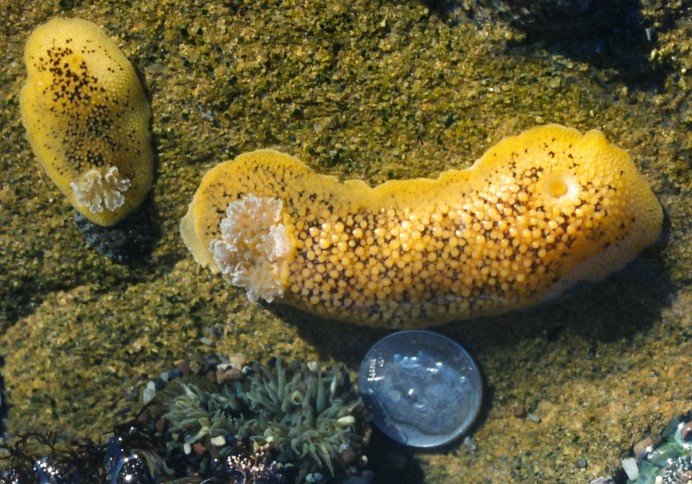
Two specimens in a tidepool, San Simeon, 2001, Dave Cowles
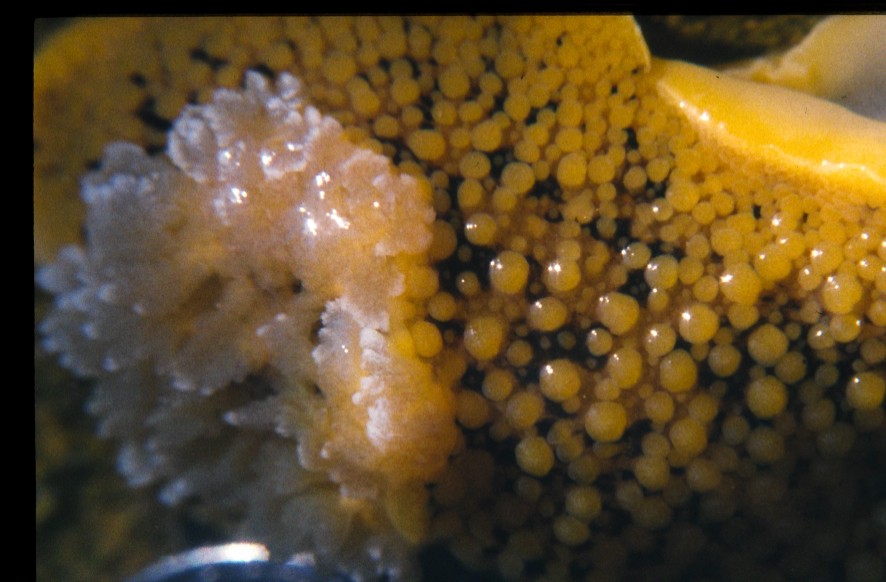
A closeup of Anisodoris nobilis dorsum showing the
gills, the
tubercles, and the dark spots between them. Photo by Dave
Cowles,
San Simeon, Ca 2001
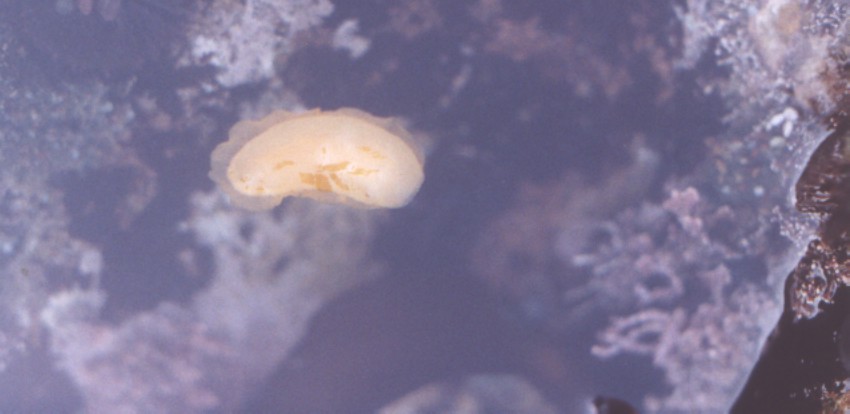
Though this species is fairly large, it can still crawl across the
underside of the surface film in tidepools. Photo by Dave
Cowles,
San Simeon CA May 2001
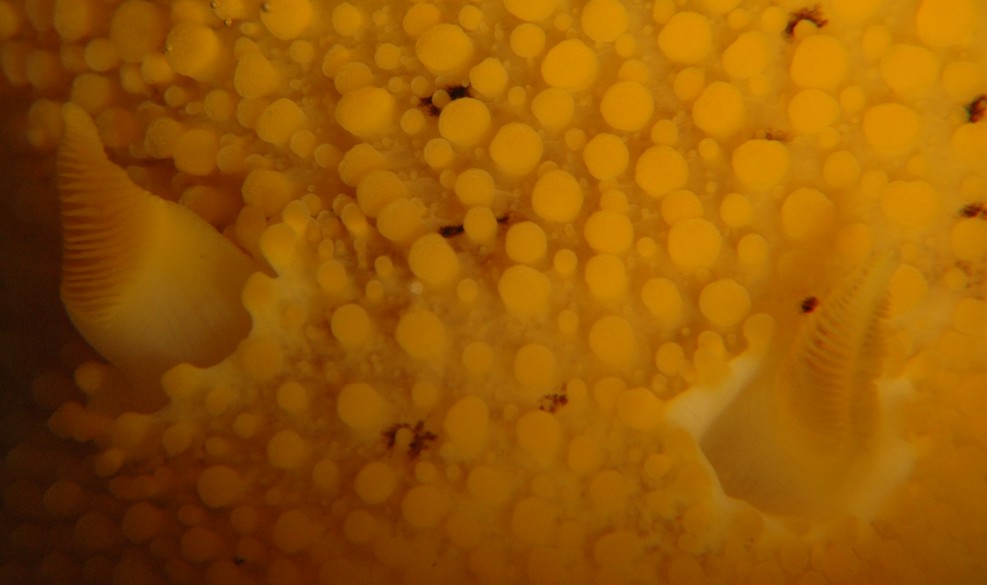
The rhinophores
are completely retractile into sheaths, and are perfoliate.
Photo by Dave Cowles, July 2005

When disturbed the animal often releases sweet-smelling
mucus.
The mucus release can be seen here to the top left. Note also
that
this individual has very few spots.
Photo by Dave Cowles, July 2006
| Top and side view of a 10.5 cm long individual found subtidally at Rosario, summer 2020. Photos by Dave Cowles |
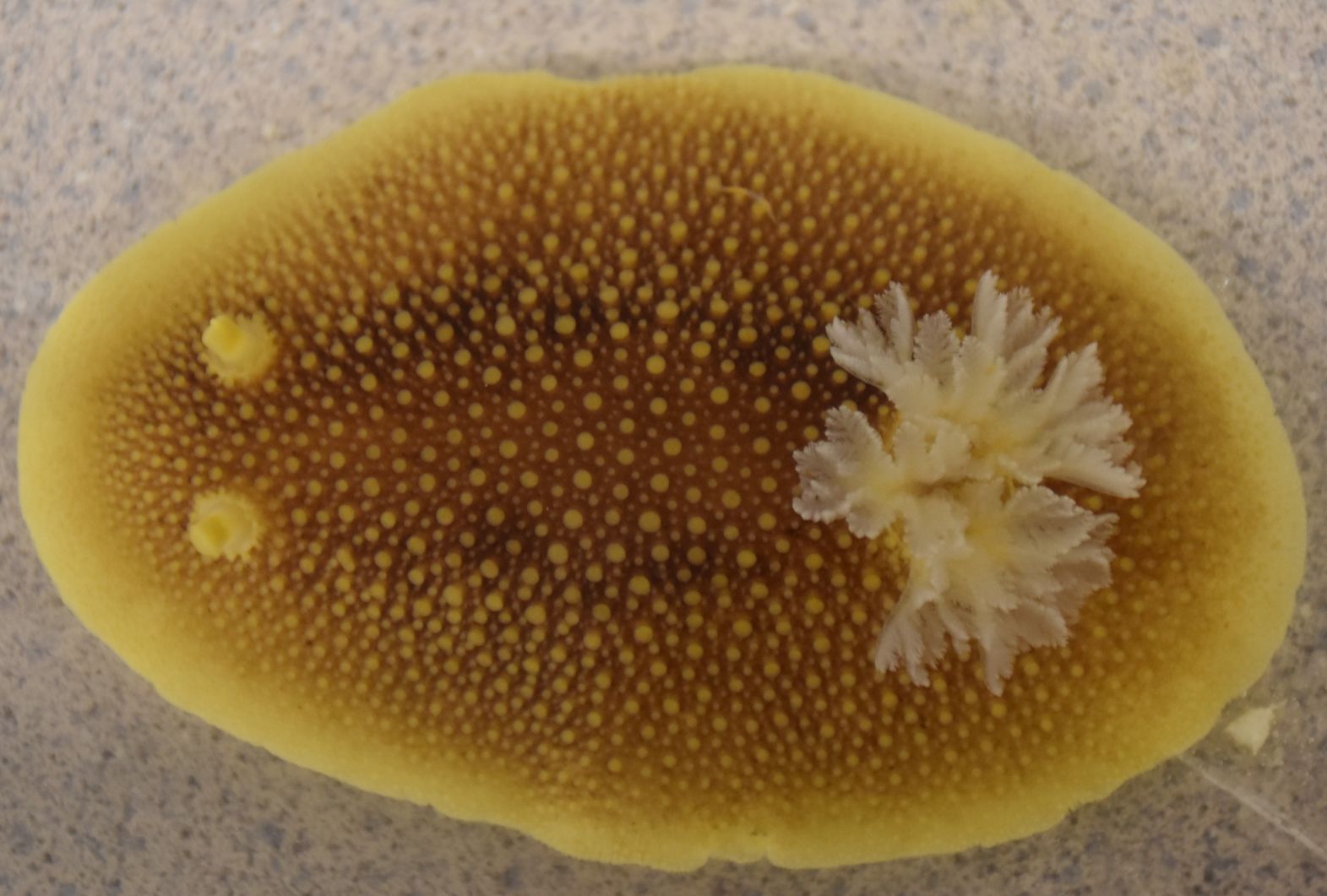 |
 |
Authors and Editors of Page:
Robbie Wheeling (2002): Created original page
Edited by Hans Helmstetler 1-2003
Edited by Dave Cowles 2005-
